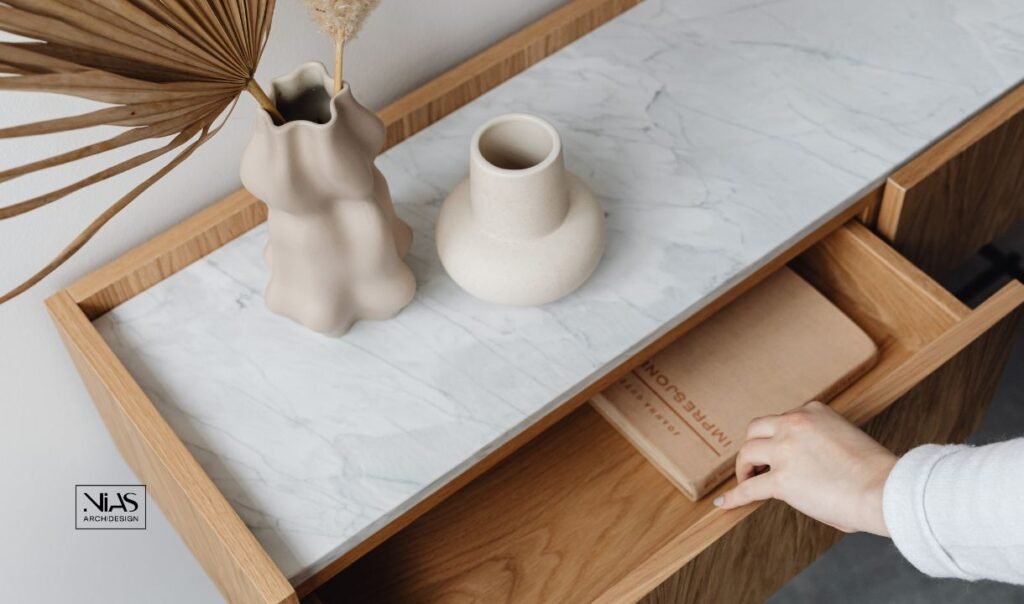
Traditional interior design is a timeless style that exudes elegance, comfort, and a rich historical narrative. This design approach draws inspiration from various periods and cultures, creating spaces that are both inviting and sophisticated. In this blog, we’ll explore the key characteristics of traditional interior design, its appeal, and how to effectively incorporate it into your home.
Understanding Traditional Interior Design
Traditional interior design encompasses a broad range of styles that reflect the aesthetics of the past, particularly from the 18th and 19th centuries. It is characterized by classic elements, symmetry, and a warm colour palette. Key features often include:
- Classic Furniture: Traditional design favors well-crafted, timeless furniture pieces. Look for items made from rich woods, often with intricate carvings or detailing.
- Rich Textiles: Fabrics such as silk, velvet, and brocade are commonly used in traditional interiors. These materials add a touch of luxury and comfort, often showcased in drapes, upholstery, and cushions.
- Color Palette: Traditional interiors typically feature warm, inviting colors. Earthy tones, deep reds, greens, and golds create a cozy atmosphere, often complemented by wallpaper with classic patterns.
- Decorative Accessories: Accessories play a significant role in traditional design. Think of ornate mirrors, framed artwork, and decorative vases that reflect historical styles and craftsmanship.
The Appeal of Traditional Interior Design
One of the reasons traditional interior design remains popular is its ability to create a sense of nostalgia and comfort. Here are a few reasons why homeowners are drawn to this style:
- Timelessness: Traditional design never goes out of style. Its classic elements ensure that spaces remain elegant and relevant, regardless of changing trends.
- Warmth and Comfort: The use of rich materials and warm colors fosters a welcoming environment, making traditional interiors perfect for family gatherings and entertaining.
- Cultural Heritage: Traditional design often incorporates elements from various cultures, allowing homeowners to celebrate their heritage and infuse their spaces with personal meaning.
Incorporating Traditional Design into Modern Spaces
Blending traditional interior design elements with modern aesthetics can create a unique and harmonious living space. Here are some tips to achieve this balance:
- Choose Statement Pieces: Invest in a few key traditional furniture pieces, such as a classic wooden dining table or an antique sideboard. These can serve as focal points in a modern setting.
- Mix Textures: Combine traditional textiles with contemporary fabrics. For instance, pair a vintage floral print with sleek, modern furniture to create a dynamic contrast.
- Layer Colors: Use a traditional color palette as a base, then introduce modern accents through accessories or artwork. This approach can help maintain the warmth of traditional design while adding a fresh twist.
- Integrate Modern Functionality: Ensure that your traditional elements serve a purpose. For example, opt for a traditional-style sofa that offers modern comfort and support.
- Use Architectural Details: Incorporate traditional architectural features, such as crown moldings, wainscoting, or coffered ceilings, to enhance the elegance of your space.
Conclusion
Traditional interior design offers a rich tapestry of history, elegance, and comfort that can transform any home into a welcoming sanctuary. By understanding its key characteristics and thoughtfully incorporating traditional elements into modern spaces, homeowners can create a unique environment that reflects both their style and heritage. Embrace the timeless charm of traditional design and let it inspire your interior spaces for years to come.


